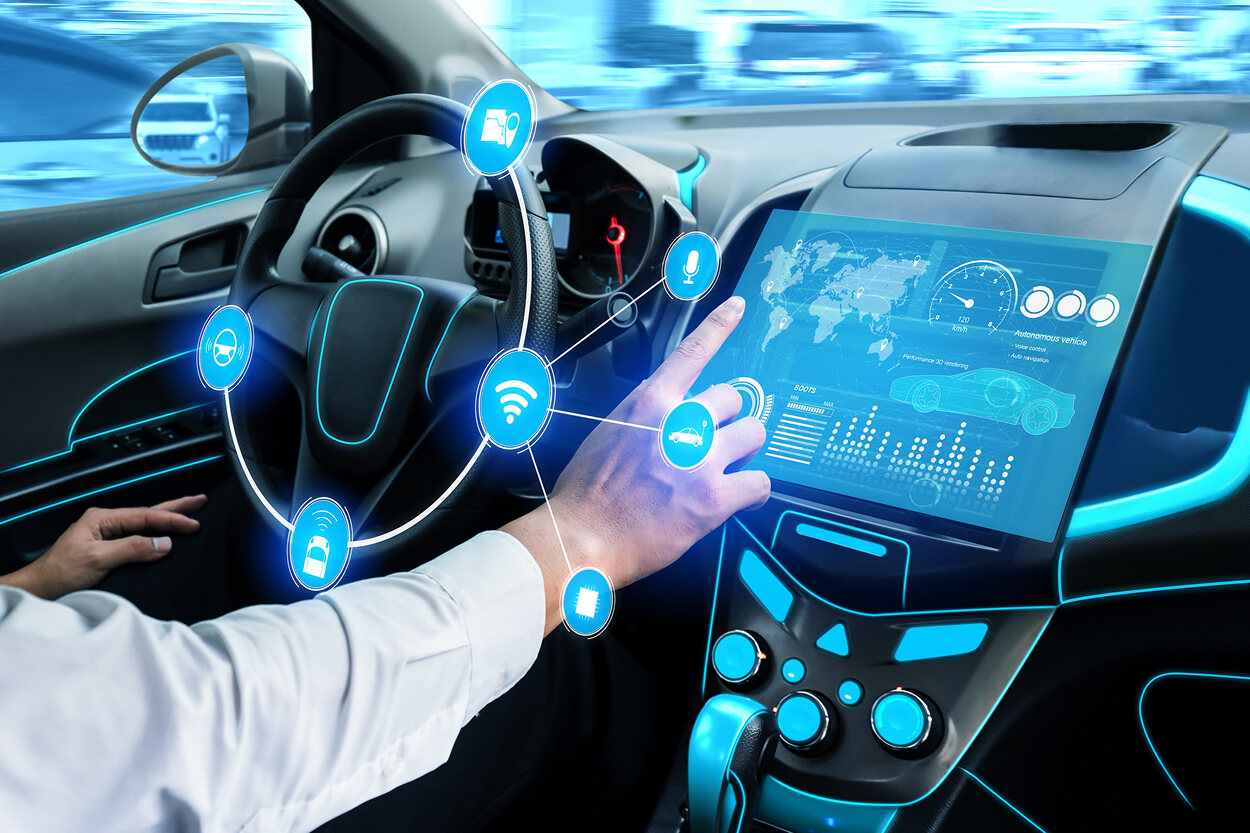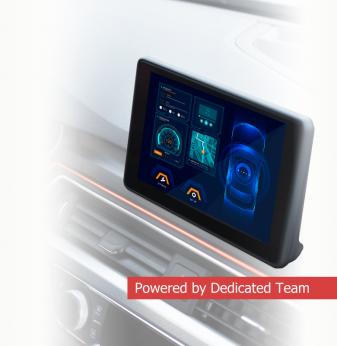How AR and Voice Tech Are Reimagining the In-Car Experience

The Evolution of Infotainment
In the early 2000s, car infotainment systems were little more than a touchscreen radio with GPS. Today, they’re intelligent ecosystems — personalized, connected, and deeply integrated into every part of the driving experience.
The next generation of IVI (In-Vehicle Infotainment) goes even further. It brings together augmented reality (AR), voice assistants, and AI-based personalization to create an immersive environment where the line between driver, passenger, and machine almost disappears.
This isn’t just about convenience anymore — it’s about making the car feel like a digital companion that understands context, predicts needs, and keeps you focused on the road while enhancing comfort and engagement.
Why Traditional IVI Systems Fall Short
Most IVI platforms today still follow a “display-and-tap” model. Drivers interact by touching the screen, scrolling through menus, or connecting their smartphones. It works, but it’s hardly intuitive.
The challenge is distraction. Complex UI, multiple apps, and cluttered information layouts pull the driver’s attention away from the road. Even with larger screens and faster processors, traditional systems struggle to balance usability with safety.
The new generation of IVI changes the equation: it shifts interaction from manual control to natural communication — through voice, gesture, and augmented visuals integrated into the driving view.
Augmented Reality Navigation: Seeing the Road Differently
Imagine driving through an unfamiliar city. Instead of looking down at a 2D map, navigation cues appear directly on your windshield, aligned perfectly with the environment. Turn arrows float on the road ahead. Street names overlay real buildings. Pedestrian crossings, lane boundaries, and speed limits update dynamically.
This is AR navigation — one of the key pillars of next-gen IVI. While full AR head-up displays are currently found mainly in premium vehicles, the technology is rapidly moving toward mid-tier adoption. Automakers are integrating AR layers into Android Automotive OS and Qt-based HMI platforms, combining proven UI frameworks with embedded AI perception modules.
AR transforms the way drivers interpret data by projecting it onto the real world. It reduces cognitive load, minimizes glance time, and provides intuitive guidance even in complex environments.
Technically, AR navigation systems combine camera feeds, GPS data, and vehicle sensors through real-time processing pipelines. AI handles object recognition, motion prediction, and spatial mapping to ensure that digital overlays remain perfectly anchored, even on sharp turns or bumpy roads.
For automakers, AR navigation isn’t just a wow-feature. It’s a safety upgrade. By integrating guidance into the driver’s line of sight, it reduces the need to look away — a crucial step toward fully assisted driving.
Beyond Directions: Contextual Awareness and Safety
Modern AR systems go far beyond arrows and signs. They detect obstacles, highlight cyclists in blind spots, and provide predictive alerts for sudden lane changes or traffic congestion ahead.
Contextual AR can even adapt to weather and lighting conditions. In fog, for example, it can outline lane edges or display an extended braking zone. In urban traffic, it might visually tag points of interest or EV charging stations relevant to your route.
These features rely on sensor fusion — combining data from radar, lidar, cameras, and GPS — all processed on embedded hardware capable of low-latency computation. Edge AI ensures the information stays real-time and relevant, even when cloud connectivity drops.
This blend of environmental awareness and data visualization turns the windshield into a live information hub, redefining how drivers perceive their surroundings.
Voice Assistants: From Commands to Companions
If AR changes what we see, voice assistants change how we interact.
The next generation of in-car voice assistants moves beyond simple command recognition (“Play music,” “Call John”). They understand context, emotion, and intent. Using natural language processing (NLP) and AI inference, they can handle complex requests like:
– “Find the nearest charging station with free spots.”
– “What’s the traffic like if I take the scenic route?”
– “Remind me to call the client when I park.”
The goal isn’t just to answer — it’s to assist, anticipate, and adapt.
Advanced systems also recognize who’s speaking. In shared cars, the assistant can greet drivers by name, adjust the seat and temperature, and restore individual preferences pulled from the cloud.
Some even integrate with external ecosystems — smart homes, calendars, or wearable devices — creating a seamless digital life that extends from your living room to your dashboard. These integrations often rely on SoCs like Qualcomm Snapdragon, NXP i.MX, or NVIDIA DRIVE, which combine powerful GPUs with dedicated AI accelerators. Running inference directly on the edge ensures privacy and real-time responsiveness — key to safe, distraction-free interaction.
The Convergence of AR and Voice
While AR and voice technologies shine on their own, the real magic happens when they work together.
Picture this: you’re approaching a busy intersection, and your voice assistant says, “Turn left at the next traffic light.” At the same moment, the AR overlay highlights the correct lane on your windshield. Or imagine asking, “Where’s the nearest café?” and seeing a glowing marker appear right over the building in your field of view.
This is the heart of immersive IVI — a multimodal interface where sight and sound reinforce each other. It creates an experience that feels natural, almost conversational, between human and machine.
In technical terms, this integration requires synchronization between multiple systems: speech recognition, AI-driven context mapping, and real-time AR rendering. The result is interaction that feels effortless — not like giving commands, but like collaborating with your car.

Designing for Human Experience
As impressive as these technologies are, they only work if they feel natural. That’s why user-centered design is critical.
Automotive designers now think less about screens and buttons — and more about flow, rhythm, and cognitive load. They study how humans perceive visual depth, how long it takes to process a cue, and how voice feedback fits into attention cycles while driving.
For instance, AR arrows fade in and out smoothly rather than popping up abruptly. Voice feedback is timed to natural pauses, avoiding sensory overload. And every design choice — color, contrast, sound tone — is tested for accessibility under different conditions.
The goal isn’t to make drivers use more technology. It’s to make technology use less of the driver’s attention.
Hardware Behind the Experience
Building this seamless experience requires powerful embedded systems.
High-performance SoCs (like Qualcomm Snapdragon, NXP i.MX, or NVIDIA DRIVE platforms) handle real-time sensor fusion, AR rendering, and AI inference simultaneously. FPGAs are used to accelerate data pipelines — especially for low-latency camera processing and neural network tasks.
Head-up displays (HUDs) with waveguide optics project AR layers directly onto the windshield. Microphones with beamforming capabilities isolate voice commands even in noisy cabins.
Meanwhile, vehicle connectivity (5G, Wi-Fi 6) ensures continuous updates for maps, models, and voice datasets. Together, these technologies form the foundation for immersive IVI systems that respond instantly and consistently.
Challenges and Limitations
Next-gen IVI brings new engineering and ethical questions.
– Data privacy: voice assistants collect large amounts of user data. Handling it securely and transparently is essential.
– Latency and synchronization: AR overlays must stay aligned in real time; even small delays can cause driver distraction.
– Standardization: automakers need shared frameworks for AR rendering, voice integration, and safety validation.
– Accessibility: systems must be inclusive — adaptable for users with different hearing, vision, or cognitive abilities.
Balancing innovation with reliability remains a delicate task. A flawless AR experience means nothing if it distracts rather than supports the driver.
The Role of Edge AI
As with most modern automotive systems, edge AI plays a crucial role here. Processing visual, sensor, and voice data locally inside the vehicle ensures responsiveness and independence from cloud latency.
For example, if the network drops during a drive, AR navigation should still highlight the right path, and the voice assistant should still process commands offline. This requires compact but powerful AI models optimized for embedded inference — a growing field where chipmakers and software engineers collaborate closely.
In hybrid architectures, the system offloads non-critical tasks (like updating voice databases or downloading new maps) to the cloud while keeping critical computations — like lane detection or command interpretation — on the edge.
What’s Next: Emotion, Adaptivity, and Co-Driving AI
The next generation of IVI will go beyond assistance — it will become an active partner.
Future systems will analyze not just the road but the driver’s mood, tone, and behavior. Cameras and sensors will detect stress or fatigue, while AI adjusts voice tone, lighting, and even seat temperature to enhance comfort.
AR will evolve into contextual storytelling — showing driver insights like battery usage over the route, environmental data, or hazard projections, all woven into the real-world scene.
And as vehicles move closer to autonomy, IVI will become the main communication bridge between human and machine — explaining what the car “sees,” “thinks,” and “plans,” through voice and visuals that build trust.
Toward a Seamless, Human-Centered Drive
Ultimately, the fusion of AR and voice in IVI isn’t just a technical trend — it’s part of a larger movement toward human-centered mobility.
Instead of overwhelming drivers with information, these systems simplify it. Instead of forcing adaptation, they adapt to you.
Cars are becoming more like companions — intelligent, aware, and responsive. And for automakers, this shift is redefining what it means to innovate. The focus is no longer on horsepower or screen size but on experience: how the driver feels, perceives, and connects. That’s what the next generation of IVI is all about — turning technology into empathy, and driving into dialogue.
Promwad Insight
At Promwad, we design next-generation IVI and digital cockpit systems powered by Android Automotive OS, Qt, and embedded AI. Our engineers integrate AR navigation, multimodal HMI, and voice interaction on SoCs from Qualcomm, NXP, and NVIDIA, delivering safe, intuitive, and emotionally engaging in-car experiences for global OEMs and Tier-1 suppliers.
AI Overview
Key Applications: AR navigation overlays, real-time sensor fusion, AI voice assistants, multimodal HMI systems, and connected IVI experiences.
Benefits: Reduced driver distraction, intuitive interaction, enhanced safety, personalization, and stronger emotional connection with the vehicle.
Challenges: Data privacy, latency, synchronization between AR and voice, and accessibility compliance.
Outlook: The convergence of AR and conversational AI will define the future of in-car experience, blending safety, intelligence, and immersion into one adaptive environment.
Related Terms: automotive AR HUD, in-car voice AI, software-defined cockpit, multimodal interface, contextual navigation, human-machine collaboration.
Our Case Studies








